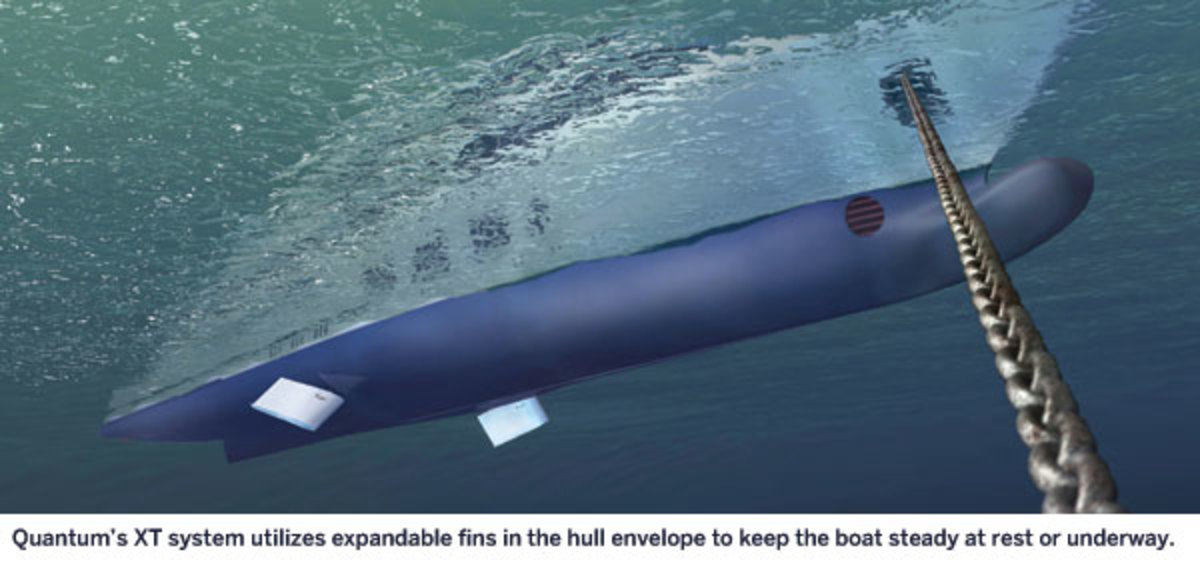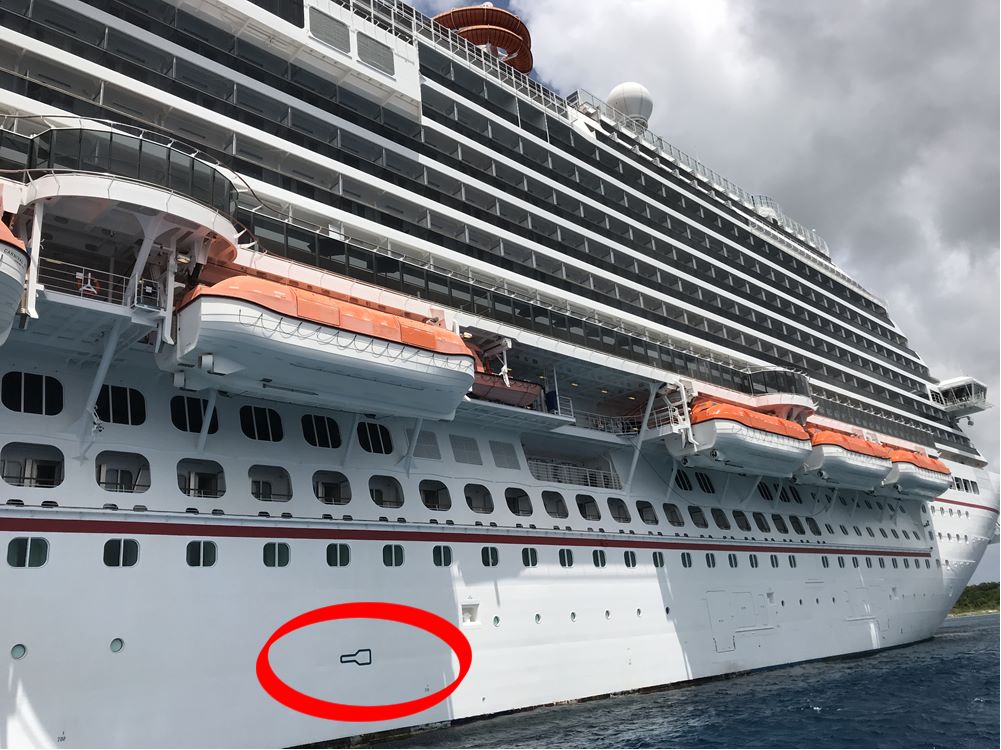What Do Cruise Ship Stabilizers Look Like
Table Of Content

One of the significant advantages of retractable stabilizers is their effectiveness in a wide range of sea conditions. By being able to adjust and optimize stabilization as needed, these stabilizers provide a comfortable and smooth sailing experience for passengers, regardless of the sea state. When the ship encounters rougher sea conditions, the retractable stabilizers are extended to minimize the rolling motion. The stabilizers work by creating hydrodynamic resistance against the rolling motion of the ship, providing stability and improving passenger comfort. These fins can be adjusted in real time to counteract the rolling motion caused by waves.
Quantum Technology Comes to Life
They produce a moment that can oppose the external forces thereby stabilizing the entire vessels. Shares his personal opinion about cruise deals and cruise tips that might help other travellers. Do let me know if you'd like to read more about certain cruise related topics. When there is movement, there will be a variance between our visual sense and that of the inner ear, which is essential for balance.
Princess Cruise Line Adjusts Daily Gratuity Charges for Enhanced Experience
The flywheels generate a torque in the opposite direction to the ship’s roll, creating a stabilizing force that counters the rolling motion. This action helps to maintain the ship’s stability and reduce the unwanted rolling sensation for passengers on board. Fixed stabilizers work by creating hydrodynamic resistance against the rolling motion of the ship. When the ship rolls to one side, the fixed stabilizers generate an opposing force in the water, acting as a lever to stabilize the vessel. This resistance helps to dampen the rolling motion, making the ship more steady and comfortable for passengers on board.
How Cruise Ship Stabilizers Work
A stabilizer can be any device or system that actively reduces the rolling motion of ships caused by waves. Gyroscopes are sometimes used in combination with stabilizers to improve their performance. Gyroscopes are devices that use the principle of angular momentum to maintain their orientation in space. They can help to reduce the lag time between the rolling motion of the ship and the adjustment of the stabilizer.
Carnival cruise ship tilts hard to one side after stabilizers fail - WFLA
Carnival cruise ship tilts hard to one side after stabilizers fail.
Posted: Fri, 02 Nov 2018 07:00:00 GMT [source]
Sure, they come with a price tag and need careful maintenance, but for many, the benefits far outweigh these considerations. Offering stability in the midst of undulating waves, these high-tech gadgets are transforming our experience at sea. I know of several ships that have two sets of stabilizers, so its not just ocean liners.
Are there any alternative methods to ship stabilization besides using stabilizers?
This is because larger ships have a greater inertia and are more difficult to stabilize. Gyroscopic stabilizers work by using a big round metal mass that spins vertically inside them. Here’s how some of the other types of ship stabilizers perform if you’re curious about them. Most of Royal Caribbean’s ships have two stabilizers, one on each side of the ship.
Also, the system will open the vents to allow the water to flow, but out of sequence to the roll, so there is a dampening effect. For those who mention Cunard ships (and I did an October crossing on the QEII), those ships are specifically designed for the sea conditions in the North Atlantic. Their hulls are designed to slice through the seas, rather than ride them, and are not configured to maximize passenger space, but to maximize efficiency. Next time you embark on a cruise adventure, take a moment to appreciate the remarkable engineering and sophisticated technology behind cruise ship stabilizers.

With computer-controlled stabilization systems, cruise ships can adapt to changing sea conditions in real-time, minimizing roll motion and providing a smoother sailing experience. Stabilization systems, such as active and passive systems, provide additional support by counteracting the rolling motion caused by waves and wind. While weather and waves can have an impact on a cruise ship’s stability, it’s important to note that cruise ships are built to withstand challenging conditions. Active and passive stabilizers are two types of stabilization systems commonly used in cruise ships to minimize the rolling and pitching motion and improve overall stability in various sea conditions.

In an active anti-rolling tank, pumps or air pressure (above the water’s surface) control water movement to decrease roll. Depending on the vessel, two separate tanks may be used, or tanks may be connected with a lower cross-duct. An axial flow pump forces water within the tank from one side of the vessel to the other. When the timing of the flow is synchronized with the roll of the ship, the roll motion can be reduced. This system utilizes a roll motion sensor and control system to control the flow of the water. A disadvantage would be the lag time required to fill the tank, causing a delay to enable any effective stabilization function.
By counteracting the motion of the waves, stabilizers decrease the ship’s resistance, allowing it to maintain a more stable course and consume less fuel. So buckle up, my fellow seafarers, as we embark on a journey to uncover the mysteries of cruise ship stabilizers and explore the future of ship stability technology. Furthermore, stabilizers contribute to the overall comfort of passengers and crew members. A stabilized ship allows for smoother movement within the vessel, making it easier to walk, dine, sleep, and perform daily activities without experiencing excessive swaying or instability. Stabilizers are mechanical devices that are installed on ships to reduce the movement of the vessel along its longitudinal axis, known as rolling. By counteracting the forces of nature, these systems help to maintain a stable and level position of the ship, enhancing the overall cruising experience.
Despite regular maintenance and inspections, stabilizers may occasionally encounter issues that require troubleshooting and repair. Cruise ships have trained technicians and engineers who are well-versed in the intricacies of stabilizer systems, enabling them to promptly address any problems that may arise. In addition to lubrication, regular inspections are crucial to identify any potential issues or signs of wear. Cruise ships typically have a dedicated team responsible for the lubrication and inspection of stabilizers.
Technology moves quickly, and today’s record-breaker might be tomorrow’s norm. Always consult with industry professionals to ensure you’re getting the most current and accurate information. A significant milestone in this field has been the unveiling of the VG1000SD by VEEM. As per the latest updates, this powerhouse has claimed the title of being the world’s largest gyroscopic stabilizer. A passive system is larger and probably has a retraction system so the ship can get alongside a pier....
The size and weight of the tanks, as well as their placement along the ship’s length and width, are carefully calculated to optimize their effectiveness. Unlike active stabilizers, passive stabilizers do not require complex sensors or hydraulic systems to function, making them a simpler and more reliable option. One of the primary functions of bilge keels is to increase the ship’s resistance to rolling.
These specialty entrees have been carefully crafted to tantalize your taste buds and leave you craving for more. From the savory Petite Beef Filet to the aromatic Thai Coconut Red Curry and the fresh flavors of the Hawaiian Poke Bowl, each dish promises to take your dining experience to new heights. What’s even better is that these entrées can be paired with a variety of sides and sauces, allowing you to customize your meal to perfection. Whether you prefer a classic combination or want to explore new flavor profiles, the new entrée pairings are sure to satisfy even the most discerning palate. Get ready to indulge in a culinary journey like no other with Oceania Cruises’ delightful new entrées. The new appetizers on the expanded menu offer a variety of delicious options for guests to enjoy.
Comments
Post a Comment